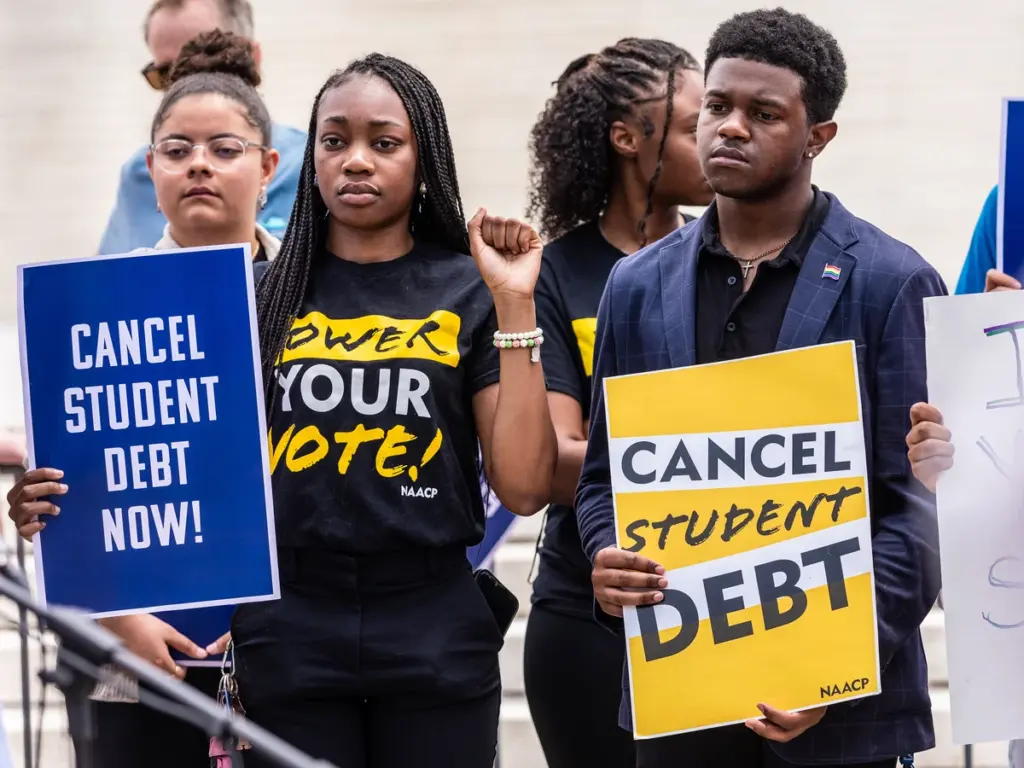Donald Trump promised to bring accountability to student loan programs. But now, many of his own voters are finding out that his plan is hitting them where it hurts the most—their wallets.

I talked with a Kentucky grandmother, Tammy Sabens, who voted for Trump in 2024 hoping he’d fix what she saw as wasteful spending. Now, her daughter-in-law’s payments have doubled overnight, and Tammy told me, “Boy, I wish I could rewind that vote.”
Why Trump Voters Are Furious: New Student Loan Crackdown
| Takeaway | Stat |
|---|---|
| Credit score drop | ~2.2 million saw a >100 point decrease |
| Wage garnishment returns | Resumed in May 2025 after 5-year pause |
| Processing delays | DOE staff slashed by 50% |
Trump pitched this overhaul as a way to get tough on debt and waste. But for many middle-class Americans—particularly in red states where college debt runs high and wages run low—the result is less reform and more regret.
The Crackdown: Back to Collections
On May 5, 2025, the Department of Education reinstated aggressive collection tactics on defaulted federal student loans. That means garnished wages, seized tax refunds, and tanked credit scores for millions who—after years of pandemic-era relief—thought they were finally back on track.
This isn’t a small group. An estimated 2.2 million borrowers are already facing credit hits of 100 points or more. Senator Elizabeth Warren called it a “financial scarlet letter,” warning it could cost Americans jobs and homes.
Tech Failures and Staffing Woes
Trump’s budget cuts led to a 50% reduction in Department of Education support staff. That’s created a backlog of nearly 2 million pending applications for income-driven repayment (IDR) plans.
In plain terms? If you tried to switch to a lower monthly payment, odds are your paperwork is sitting in a pile—unprocessed for months.
Kelly Belt, a high school teacher in Missouri, had her application frozen mid-process. “I did everything by the book,” she said, “and now I’m stuck paying triple.”

Promises Blocked, Regret Sets In
Many voters supported Trump in 2024 because they believed he would uphold relief programs like SAVE, which was designed under Biden to cap payments at 5% of income. But courts have blocked that program. And under Trump’s DOJ, there’s no push to revive it.
Instead, new proposals aim to shrink repayment plans to just a couple of bare-bones options.
For voters like Miranda Metheny, a disabled mom from Indiana, this all feels like betrayal. “I have buyer’s remorse,” she said. “I believed he’d protect us.”
Real Stories, Real Pain
Tracy Davis saw her monthly bill jump from $150 to over $400 in May. Her only mistake? Trusting the system would be stable.
Lesa Sandberg—another Trump voter and mother-in-law to a borrower—calls it “just wrong.” Her daughter-in-law had planned her career around SAVE, only to watch it vanish overnight.
What Borrowers Can Do
1. Check Your Status: Log into StudentAid.gov to see if you’ve been marked in default.
2. Submit a Paper Application: Online systems are glitchy. Old-school mail might be slower but more reliable for IDR plan requests.
3. Call Your Representative: Especially if you voted Republican, your voice may carry more weight now than ever.
4. Document Everything: Keep records of payments, applications, and communication.






